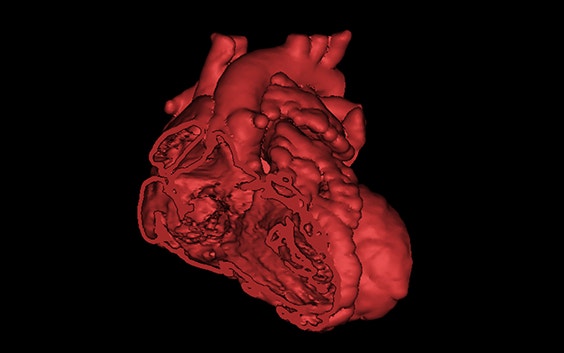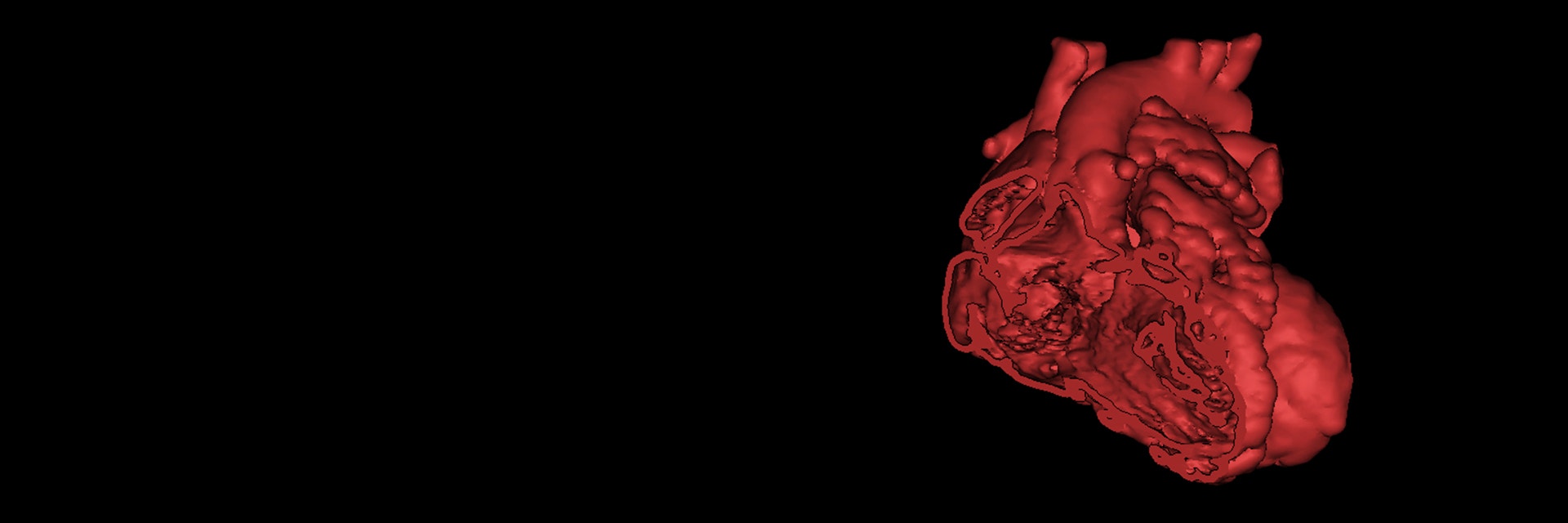EXPERT INSIGHT
Personalized 3D Predictions for Congenital Heart Disease Patients Win a Mimics Innovation Award

Non-invasive, accurate, and personalized prognosis methods may be making their way into the medical world faster than we think.
This was recently seen by a study done by researchers at the University of Milan for a novel 3D methodology that assesses the clinical scenarios after complex heart disease surgery. Their research won the 2019 Mimics Innovation Award for using the 3D visualization software to predict how an individual patient’s heart will react to a stent — a common treatment method if the patient suffers from complications following the repair of complex congenital heart disease. The advantages show that personalized 3D modeling could be a step closer to avoiding peri-procedural risks, thereby improving patient prognosis.
Congenital heart disease affects 1% of babies around the world
In the United States alone, 40,000 patients are born with congenital heart disease. Of those, 20% suffer from a complication called right ventricular outflow tract (RVOT) dysfunction. A heart valve replacement known as a homograft conduit implantation is the most common surgical treatment to alleviate this condition. Unfortunately, long-term post-operative RVOT dysfunctions are common.
The most common solutions today are to use metal pre-stenting of the conduit and percutaneous pulmonary valve implantation. However, these surgical methods also lead to complications that are often life-threatening. There are a number of factors that increase the risk for adverse events, such as the morphology of the RVOT, the anatomy of each patient, and the mechanical interplay with the metal stent.
Materialise Mimics for personalized 3D finite element modeling
Alessandro Caimi and his colleagues at the University of Milan saw the need for new treatments to increase the lifespan of the conduit and saw the potential of using finite element (FE) modeling. They were able to investigate the prediction power of personalized FE models to assess stenting feasibility and clinical risks.
In their research, they used Mimics' segmentation algorithms for the personalized 3D heart reconstruction from CT images and posterior triangulated surface mesh generation. Mimics was crucial for the success of his research project due to the high quality and speed of the results, which are decisive when analyzing complex morphologies prior to human treatment.
The FE analysis has been proven to be consistent with the clinical evidence. This opens the door to better prediction of outcomes after stent surgery in patients suffering from congenital heart disorders, or any other dysfunction needing this surgical procedure.
Mimics Innovation Awards
Each year, we host the Mimics Innovation Awards to support scientists conducting cutting-edge research to make the world a better and healthier place.
The jury for the 2019 awards included Materialise CEO Fried Vancraen, who said the following about the research findings:
“From the MIA jury, we are extremely proud and happy that we can again propose a fantastic article as the overall award winner.


“This article is strong in multiple dimensions and perfectly illustrates how fantastic groups of researchers, such as those in bioengineering at the University of Milan, use Mimics to bring the possibilities for patient treatment to new levels.
“What do we mean by this statement about ‘dimensions’ and ‘levels’?
“It is well known that Mimics supports better treatment of young children with congenital deviations through data preparation for medical models. But although those children are saved at a young age, they never get a ‘standard heart.’ The consequence is that many need multiple treatments later in life, such as the three people studied in this article. Thanks to the fact that one can go beyond geometrical modelling and enter with FE analysis into functional modeling, one can really study the effect of standard devices such as stents in those exceptional hearts with specific calcifications. Doing so, a new level of security can be achieved in quite complicated, dangerous, exceptional surgeries.
“For those exceptional surgeries, generating valid medical evidence is quite difficult. But the concept of blind verification of the simulated results in comparison to post-op results is offering a viable new way to an increased level of scientific verification.
“So in multiple ways, the winning article is innovating and helping to pave a path for patients with very specific conditions to be helped in a safe and scientifically justified way. We hope to welcome the 2020 edition of the MIA competition with multiple articles that further advance science for a better and healthier world.”
L-100811-01
Share on:
You might also like
Never miss a story like this. Get curated content delivered straight to your inbox.
